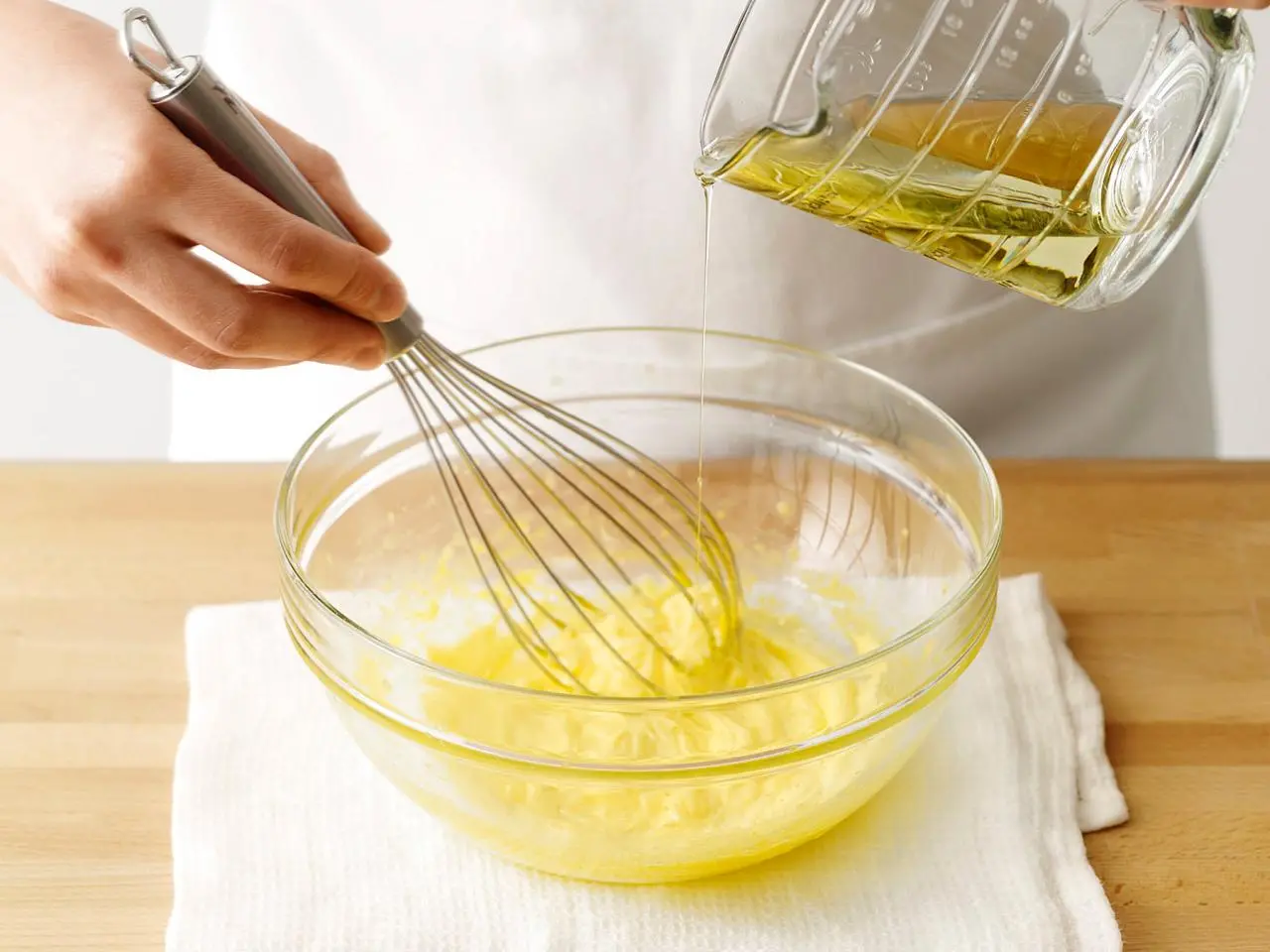Homemade Mayonnaise (মেয়োনিজ) — Making, Types, Separation, Storage & SOP

How mayonnaise works, step-by-step production for home & commercial kitchens, troubleshooting broken mayo, types, and best storage & SOP practices.

Introduction — Why Mastering Mayonnaise Matters
Mayonnaise is a deceptively simple yet scientifically interesting sauce: a cold oil-in-water emulsion. It is the foundation for many dressings (tartar, ranch, aioli), sandwich spreads, and blended sauces used across restaurants, catering, and home kitchens. A properly made mayonnaise has a smooth texture, clean flavour and good shelf stability when handled correctly. Poor technique leads to a “broken” emulsion — oil separation, watery layers and waste — which harms both customer satisfaction and kitchen costs.
This article explains the ingredients and science, provides a detailed step-by-step making method suitable for home and scaled commercial use, shows why separation happens and how to fix it, lists mayonnaise types, and gives storage, HACCP and SOP guidance for kitchen managers.
Core Ingredients & Their Functions
A typical classic mayonnaise contains: egg yolk (or pasteurized yolk), a neutral oil, an acid (vinegar or lemon), salt and sometimes mustard or sugar. Each component plays a role:
- Egg yolk: source of lecithin — the natural emulsifier that stabilises oil droplets inside the water phase.
- Oil: provides body, richness and mouthfeel.
- Acid (vinegar or lemon): adds tang and lowers pH for microbial stability.
- Mustard: optional but helpful — mustard contains natural emulsifiers and adds flavour.
- Water: part of the aqueous phase; amount affects texture and stability.
Commercial formulations may also add starches, gums (xanthan, guar), or preservatives to improve texture and shelf life. For restaurants, pasteurised yolks are often used for safety.
The Science in Short
Mayonnaise is an emulsion: microscopic oil droplets are dispersed and held suspended in a continuous water phase. The emulsifier (lecithin in yolk) coats oil droplets and prevents them coalescing. If enough emulsifier is not available, or oil is added too quickly, droplets join together and oil separates — this is a “broken” mayonnaise.
Step-by-Step Making Process (Home & Commercial)
Here’s a method that scales from a single jar at home to a larger batch for catering. Attention to sequence, speed of oil addition, and temperature control are the keys.
1. Preparation & hygiene
Use fresh ingredients and clean equipment. For commercial kitchens choose pasteurised liquid yolk if local food safety rules require it. Measure ingredients carefully and keep everything sanitary. Room temperature ingredients mix more predictably than extreme cold or heat.
2. Make the aqueous base
Combine egg yolks, mustard, vinegar/lemon, salt and a small amount of water in a clean bowl or mixing tank. Whisk or run low speed to homogenise the aqueous phase.
3. Start the emulsion — add oil slowly
This is the most critical stage. While whisking constantly (by hand, with a hand mixer or in a food processor), add oil drop by drop or in a very thin stream. Initially the oil must be incorporated slowly so the emulsifier can coat each droplet. As the mixture thickens you can increase the oil flow but never dump it all at once.
4. Finish & adjust
Once the desired volume of oil is incorporated and the mixture is thick and glossy, taste and adjust: more vinegar/lemon for tang, salt for seasoning, sugar to balance acidity. If a slightly thinner consistency is required, add a teaspoon of cold water and whisk.
5. Stabilise & pack (commercial)
In industry, downstream homogenisers, vacuum mixers, or mild pasteurisation steps may be used for stability and safety before cooling and filling. For small kitchens, transfer to a clean jar, label with date and chill immediately.

Ratios & Example Recipes
A standard small-batch home recipe (approx. 250–300 g final):
1 large egg yolk, 1 tsp mustard, 1 tbsp vinegar/lemon, 200–230 ml neutral oil, pinch salt, small pinch sugar, 1–2 tsp water (optional).
For commercial full-fat mayo, oil content is often 65–80% of final weight. Low-fat versions replace some oil with water and thickeners. Always test small pilot batches when developing new formulations.
Why Mayonnaise Breaks (Separation) & How to Fix It
- Oil added too quickly: initial phase fails — add oil slowly.
- Insufficient emulsifier: not enough yolk or mustard for the oil amount.
- Temperature mismatch: very cold oil into warm yolk or vice versa destabilises emulsifier action.
- Contamination: excess water leads to poor droplet coverage.
- Mechanical stress: improper mixing or excessive shear can cause coalescence.
Rescuing a broken mayonnaise
Start with a fresh egg yolk in a clean bowl and slowly whisk in the broken mixture as though adding oil. The fresh yolk presents new emulsifier surface area and can re-bind the oil into a stable emulsion.
Types of Mayonnaise & Where to Use Them
- Classic/Full-fat: rich mouthfeel; best for premium spreads and high-end salads.
- Japanese (Kewpie style): uses only yolks and rice vinegar — creamier and slightly sweeter.
- Low-fat: reduced oil, typically thickened with starch or gums.
- Vegan/eggless: uses aquafaba, soy or plant lecithin.
- Speciality flavoured mayo: aioli (garlic), herbed, chilli mayo, citrus mayo.
Storage, Shelf Life & Food Safety
Homemade
- Store in a clean, airtight container in the refrigerator (≤ 5°C).
- Use within 3–5 days.
- Label with preparation date/time and batch details.
Commercial
- Unopened, pasteurised mayo is shelf stable for months.
- Once opened: refrigerate and follow manufacturer’s guidance.
- Use FIFO, clean utensils, and avoid mixing old and new product.
Signs of spoilage: sour smell, visible mould, or discoloration. Discard if in doubt.
Operational & Cost Considerations
- Oil cost is major: higher oil content increases cost.
- Produce only as much as needed daily to reduce waste.
- Train staff to understand slow oil addition and storage hygiene.
- Follow HACCP protocols and track storage temperature.
Practical SOP — Quick Checklist
- Sanitise bowl, whisk, and jar.
- Measure and label ingredients.
- Combine yolk + mustard + acid + salt; whisk to homogenise.
- Add oil drop by drop while whisking constantly.
- Taste and adjust seasoning.
- Label container, refrigerate ≤5°C, and use within 3–5 days.

Final Thoughts
Mayonnaise is more than a sandwich spread — it’s a culinary science foundation. Understanding emulsification and safe handling ensures both taste and safety in every kitchen.
Expand Your Reading
Discover more content you might enjoy
